Rakshasa in Dungeons and Dragons first appeared in The Strategic Review #5. This issue was published in 1975. They were later discussed as “The Demons of India” in the supplement “Gods, Demigods and Heroes” published in 1976.
These creatures are evil and powerful. They are based upon Hindu Mythology. These creatures were considered man eaters. A female Rakshasa is called a Rackshasi. Rackshasa were believed to often appear in human form. A female Raskasa in human form is known as a Rackshesha. In Hindu mythology a Raskshasa is sometimes referred to as a Asura. In mythology the Raskshasa was usually depicted as an enormous monster with large fangs. They could fly, vanish and possessed the power of illusion.
The Rakshasa in Dungeons and Dragons is very similar. It too has magical powers. And it is well versed in the power of illusion.
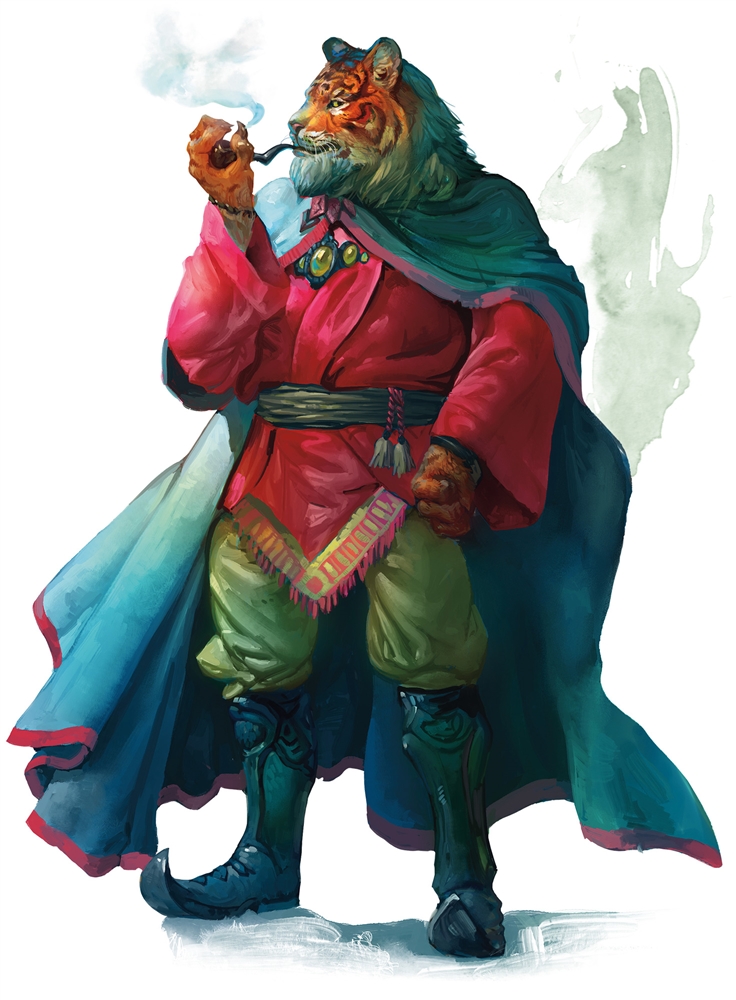
Rakshasa in Dungeons and Dragons 1st Edition
In first edition the Rakshasa appeared in the Monster Manual published in 1977. The Monster Manual states that these creatures were first known in India. And then it warns that these evil spirits are encased in flesh and are spreading. They are fond of human meat. And they are powerful masters of illusion. This makes them an extremely dangerous adversary.
Dragon magazine issue #84 expanded upon the Rakshasa. It provided the Rakshasa knight and the Rakshasa Lord.
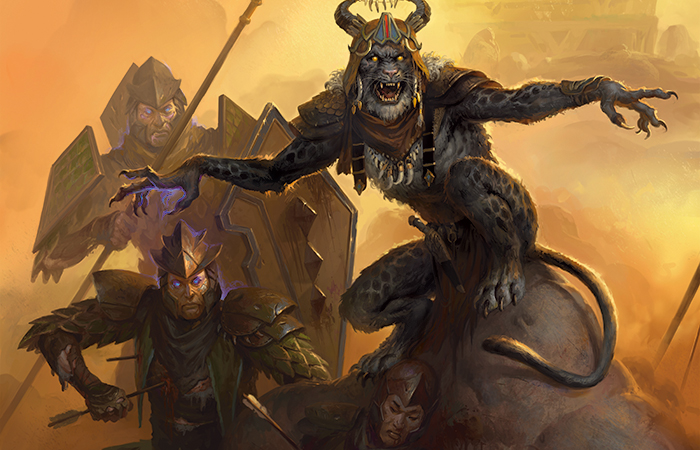
The Rakshasa had the power of ESP at it’s disposal. This ability allows the creature to create illusions that will place it’s potential victims at ease. The Rakshasa will be aware of the things that will make adversaries feel comfortable and safe. And it will use these things in order to trap and devour it’s favorite sources of food.
The creature has the ability to use magic user spells up to 3rd level and clerical spells up to 1st level yet is affected only by spells greater than 8th level. Weapons of less than +3 in magical enhancement will do only one half damage to them. Normal weapons will be totally ineffective. But a crossbow bolt blessed by a cleric will instantly kill the Rakshasa.
The Rakshasa is generally a reclusive creature but if found together with others of it’s kind one will be male and all others will be female.
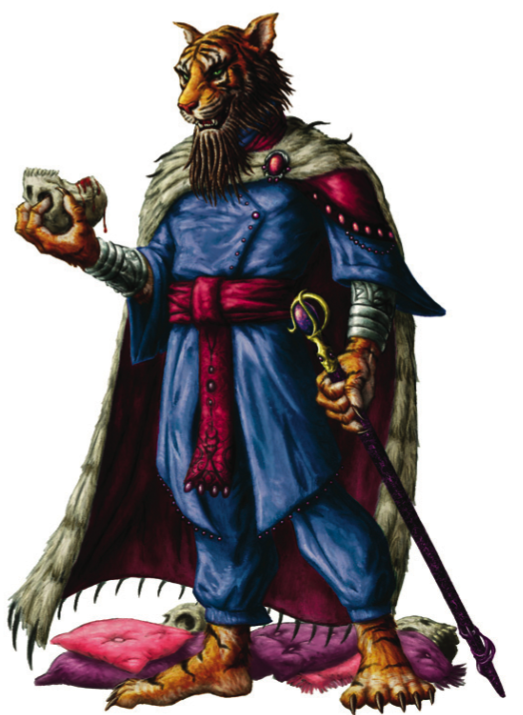
Rakshasa in Dungeons and Dragons 2nd Edition
In Second Edition the Rakshasa was found in volume one of the Monstrous Compendium. Several variants were also detailed including: the Maharajah, the Rukh and the Raja. The Rakshasa and Greater Raskshasa were detailed in the Monstrous Manual.
These creatures often appeared as humanoid creatures with the head of an ape or a tiger. Rakshasas of high standing sometimes have more than one head. Often they wear human clothing of the highest quality. They often stand six to seven feet tall. And they typically weight 250 to 300 pounds.
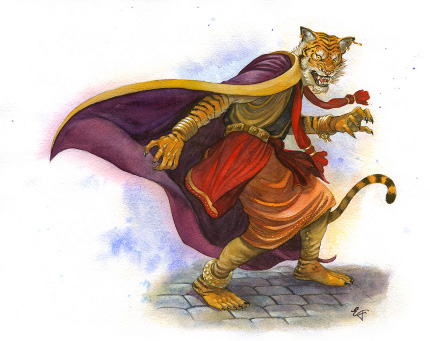
When the Rakshasa attacks it drops the illusions that make it appear to be a benign presence. The reality of the situation will become immediately clear to the potential victims about to die. This terror enhances the pleasure of the feeding.
The Rakshasa social life is based upon a strict caste system. Typically there will be 1 to 3 female Rakshasa per male. Groups will be led by a Maharajah or a Rajah.
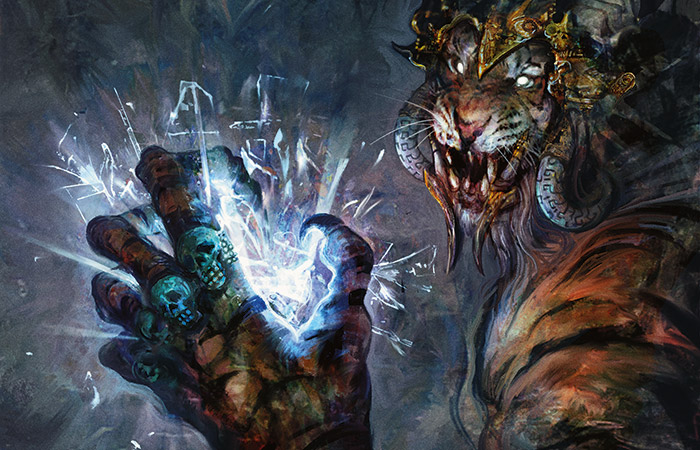
Humans are not only killed for food. The Rakshasa are at war with humanity. They believe that battle is the only way to obtain honor. The creatures consider honor to be of paramount importance. Should the Rakshasa enter into an agreement with others (even with a human) it will follow the agreement strictly but will use any loophole or twist any meaning in order to avoid the intent of such agreement.
These evil spirits are virtually immortal. They live until slain by others in battle.
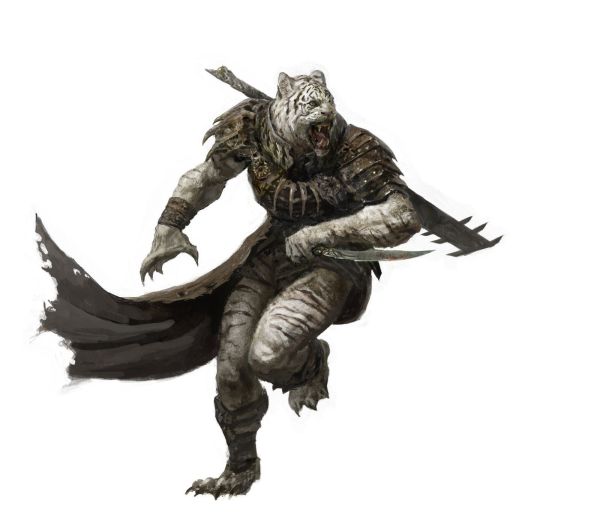
Types of Rakshasa in 2nd Edition:
- Rukh – These are also known as Greater Raskasa or Knights. They are more powerful and have higher resistances than others of their kind. Only about 15% of Rakhasa are Rukh. These Rakshasa are immune to spells of less than 9th level. They only take damage from weapons of +2 or greater and take only half damage from weapons less than +4.
- Rajah – These are also known as lords. They have the same immunities and powers of a Rukh but also have spell casting abilities of a 6th level priest and an 8th level wizard. Spells cast by these Rajah are cast at 11th level.
- Maharajah are also known as dukes. They have the same abilities and immunities of the Rukh but have more hit dice and hit points (13HD+39). They cast spells as a 13th level wizard and a 9th level priest. They will lead multiple clans or large single clans of Rakshasa. They generally live on the outer planes.
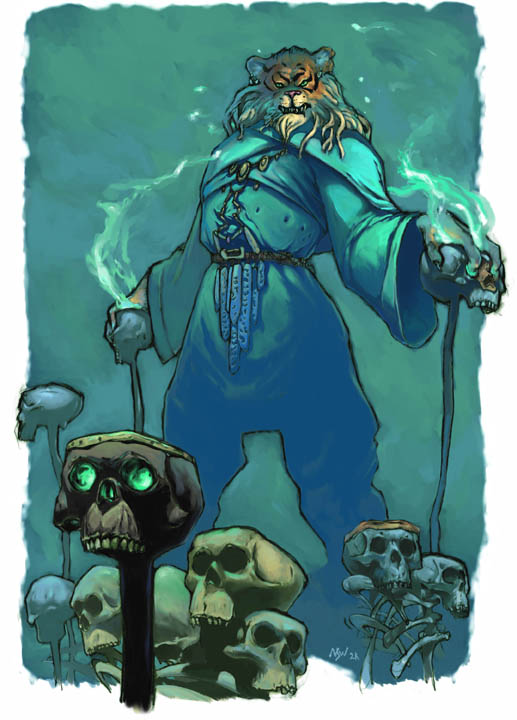
Rakshasa in Dungeons and Dragons 3rd Edition
The Rakshasa are in the Monster Manual for 3rd edition. They are later expanded upon in Dragon #326 and #337. More variations are provided in the Monster Manual III. Third Edition Variants include:
- Ak’chazar – These have the head of a white tiger. They are powerful spell casters specializing in necromantic magic. They prefer to reside in old battlegrounds and graveyards. They use undead creatures to do their dirty work for them.
- Naztharune – These have the head of a black tiger. They are covered in black fur. They have less magical powers but are more powerful fighters than many other types of Rakshasa. They specialize in assassination.
- Naityan Rakshasa – These are shapeshifters with combat styles beyond this world.
- Rakshasa Knights – These Rakshasa hunt paladins.
- Zakyas – These focus on the use of weapons in combat. They have weak magical powers compared to others of their kind.
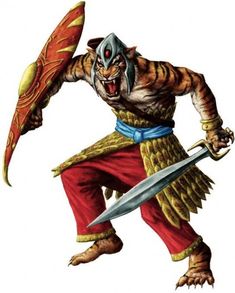
Rakshasa in Dungeons and Dragons 4th Edition
Rakshasa are in the 4th Edition Monster Manual. They are generally solitary beings. But occasionally they do work cooperatively. However working with others not of their species is often conditional. These creatures will always want to be the leader in any such endeavor.
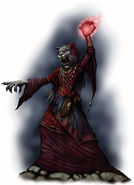
Rakshasa in Dungeons and Dragons 5th Edition
The Fifth Edition Rakshasa exercises dominion over others. Few creatures will ever see this creature in it’s true form as it uses illusion and misdirection as it’s primary weapons. It can take on any appearance but will generally choose an appearance which seems familiar and safe to it’s victims. It will often masquerade as someone powerful such as a lord, baron, noble or even king.
The true form is that of a human form with a tiger head. Features of both creatures will typically be present. One telling detail, however, is that the palms of the Rakshasa will appear where the back of a human hand would. Someone noticing such a flaw might realize then who they are dealing with.
The Fifth Edition Rakshasa originate from the Nine Hells. They are evil spirits in mortal flesh. The Rakshasa are only on the material plane to feed on humans. They have an insatiable appetite for human flesh.
The Fifth Edition Rakshasa is not destroyed forever if killed on the Material Plane. Like Devils these creatures can only be permanently slain in the Nine Hells. Therefore one who kills such a creature on the Material Plane might find that they have gained an eternal enemy that may cause them further harm in the future.
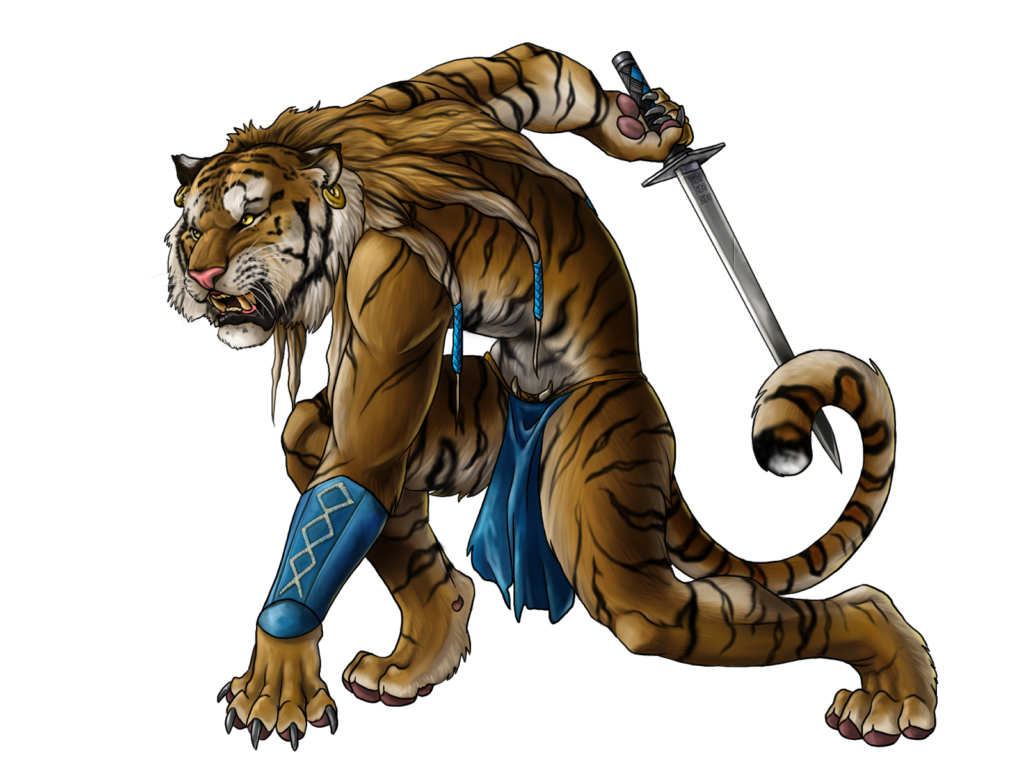
Rakshasa Worship Ravanna
Ravanna is the king of the Rakshasa. Ravanna is a ten headed lesser god. There is precious little information in any of the Dungeons and Dragons Sources regarding this deity.
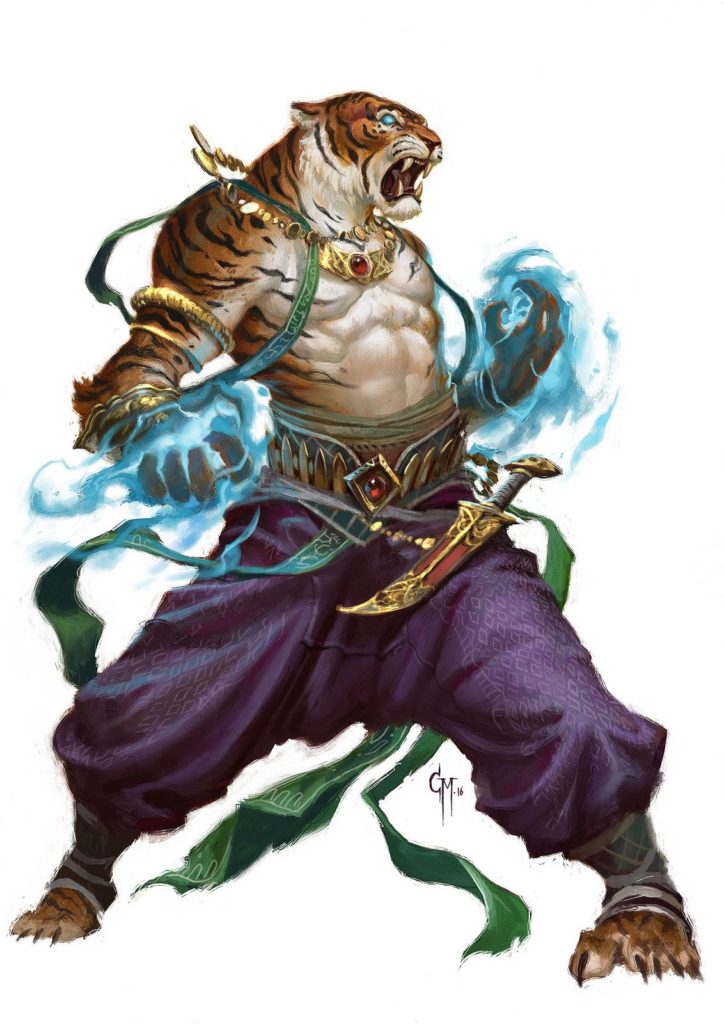
Rakshasa are dangerous adversaries regardless of what edition of the game that you play
These creatures are powerful for many reasons. Spell use, is of course, one of these. But the power of illusion and the limited ESP of these creatures give them an enormous advantage over others. As they can appear as almost anything or anyone it is likely that their victims will be totally unaware of the danger until far too late.
Their powerful immunities make them nearly invulnerable to most forms of attack. And their virtual immortality gives them the opportunity to live incredibly long lives and accumulate vast amounts of knowledge.
Regardless of edition there is one thing for sure regarding these creatures. You will never want to meet one in your travels. For it might be the last individual that you ever meet……
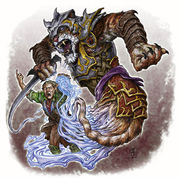
If you enjoyed this article then you might enjoy these:
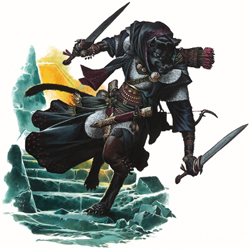


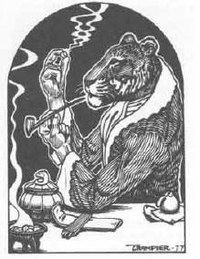
I used one in 5th edition as the leader of a traveling circus. Very cool villain. Because they are nearly impossible to kill and work in the shadows it’s best to set up as a long term enemy rather than a 1-off adversary.
I hadn’t heard of the Rakshasha Knights who hunt paladins. That would be a pretty cool villain too. It would be interesting to have this unstoppable force constantly perusing the party, having them just constantly afraid of when he might strike next.
Yeah I had not heard of the Rakshasa Knights either until I began researching the article. I have played most of the editions of D&D now but my experience in many of them has been limited. I began with 1st edition and still play that one most often. The 5E I have played has mostly been at conventions. I have not seen a Rakshasa used, yet, in my 5th edition play. But I have mostly been playing tier one Adventurer’s League games so perhaps once I move up to the 2nd tier I might encounter one.